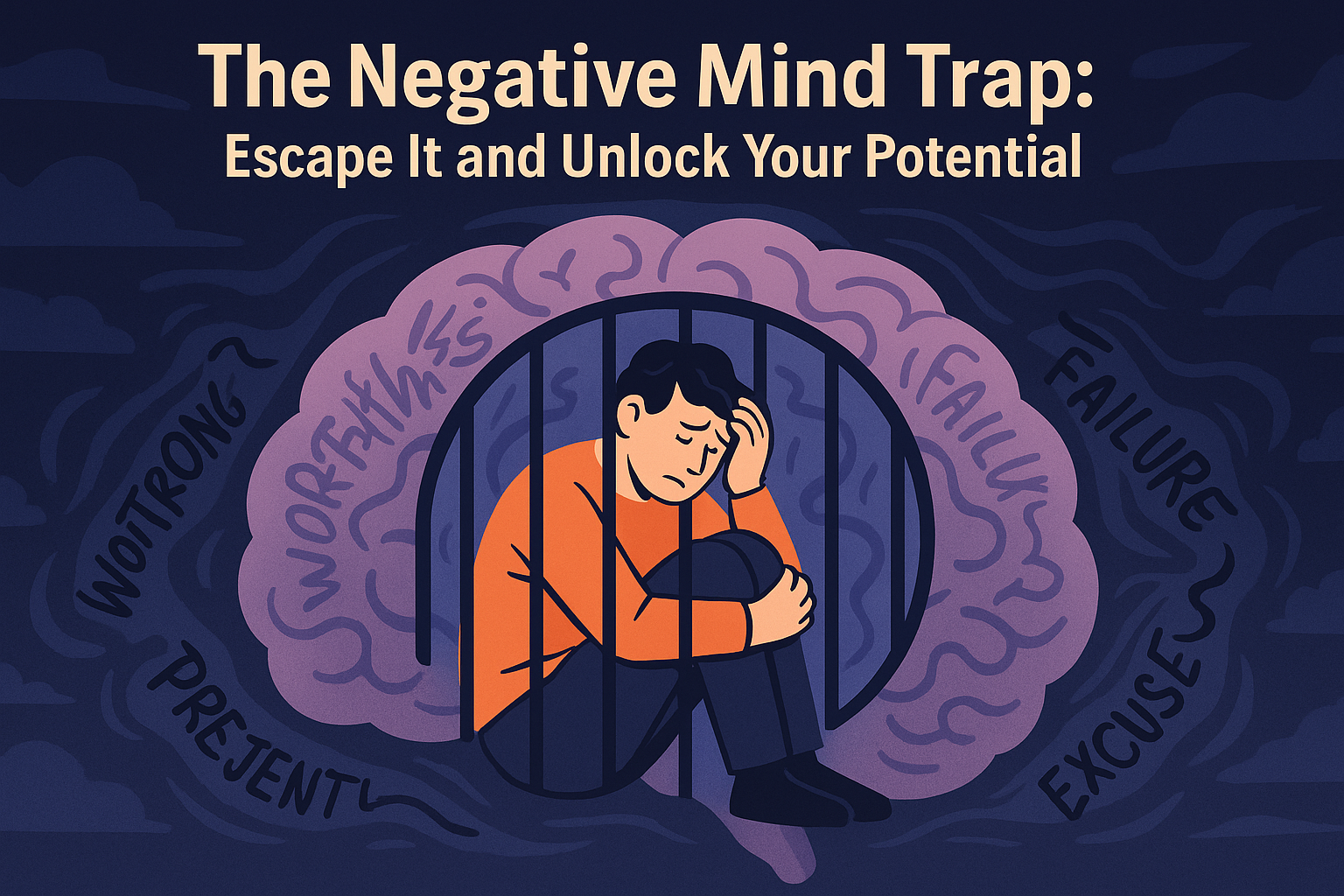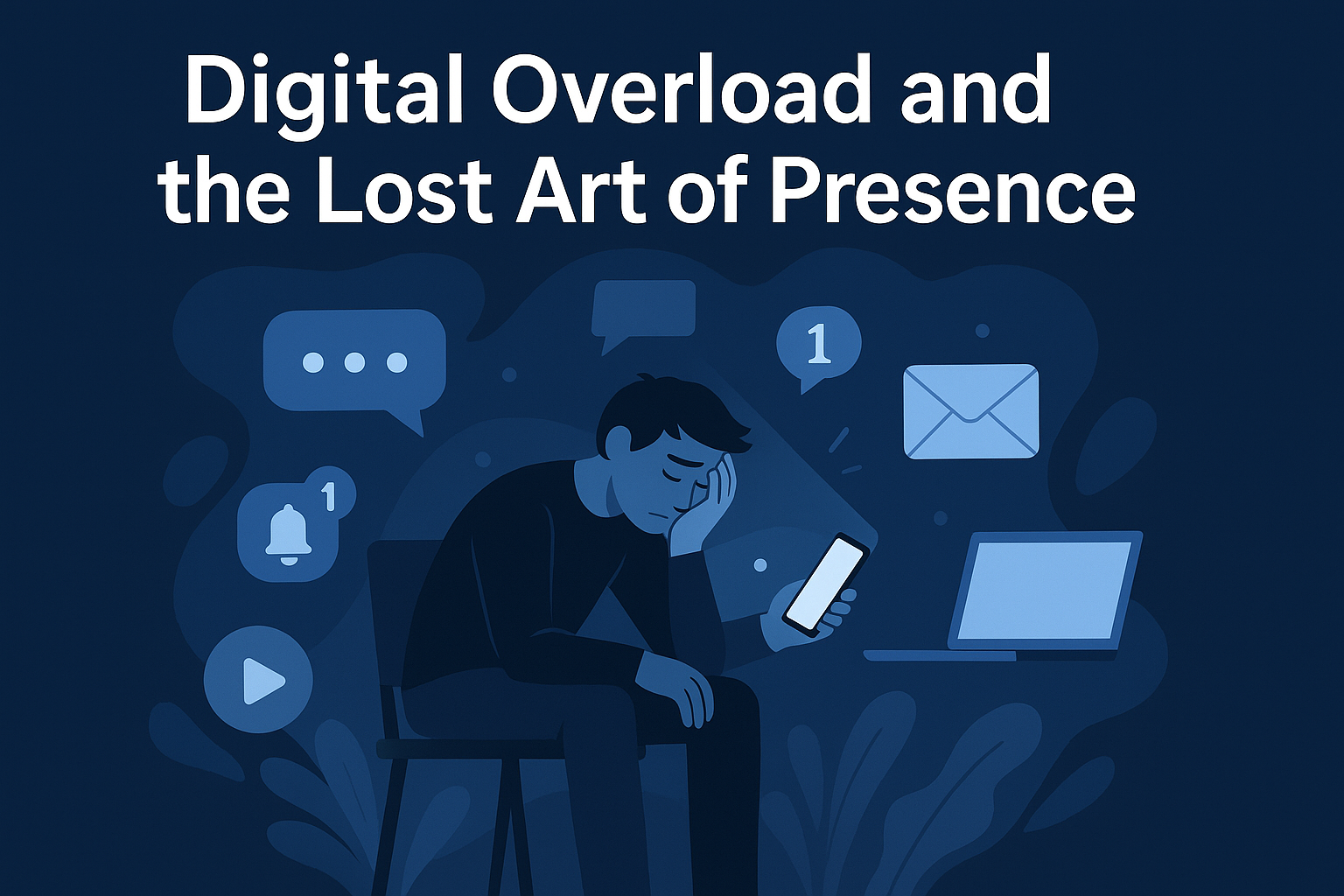Our mind is the most complex and dynamic entity. Our mind frequently exhibits uncontrollable behaviour, defying our attempts to manipulate it. It is because of the fact that our mind continuously processes information, reacts to internal and external stimuli, and keeps on generating thoughts, often unconsciously. Many a time, a condition called “negative mind trap” arises. This prevalent condition traps individuals in a loop of recurring negative thoughts and emotions, creating a vicious cycle of negativity.
When we are under stress, experiencing worry persistently, self-doubt, etc., our mind becomes more susceptible to negative thoughts. At this point our mind is turned into one of our biggest challenges as we replay past failures, exaggerate our fears and uncertainties, and underestimate our worth. But this mental condition is not permanent. With awareness and a conscious effort, we can break free from this “negative circle” and move forward.
What Is the Negative Mind Trap?
Negative thinking forms a persistent pattern that the negative mind trap refers to. These thoughts often sound like
• “I’m worthless, a failure in life.”
• “I can’t do anything right?”
• “I am not good at handling people.”
are generally false. Thoughts are not real. Unconscious neurological processes automatically generate them. According to psychologists, these distortions and biases in thought patterns are known as ‘cognitive distortions,’ which are mental filters that distort reality.
There is a famous quote of Byron Katie: “You don’t need to accept every thought that runs through your mind.”
Why do we fall into the trap?
There are certain biological and psychological factors that make us think negatively. The important ones are
1. Evolutionary bias toward fear
Dr. Rick Hanson, in Hardwiring Happiness, reveals that our brains possess a negativity bias, which is an evolutionary survival mechanism that causes us to remember threats more clearly and vividly than positive events. Our ancestors used this survival mechanism to stay safe, yet this natural response now causes us to concentrate more on criticism, rejection, and failure.
2. Early life conditioning
The way we see ourselves today is shaped by the criticism and neglect we experienced while growing up and the difficult or near-impossible expectations that were placed upon us. Our beliefs from early life eventually determine our perspective on both ourselves and everything else around us.
3. Mental health factors
Negative thinking becomes more intense in people who suffer from mental health conditions like depression, anxiety, and PTSD. Depression affects well over 280 million people worldwide according to the World Health Organization, and many of these individuals experience persistent negative thoughts.
The Science Behind the Trap
Modern neuroscience establishes that both positive and negative thought patterns create durable neural connections in the brain. This process is known as neuroplasticity since the brain possesses the power to change itself. It is a continuous, lifelong process. We have all the power to change our brains by strengthening the neural pathways of the concerned brain part.
Donald Hebb’s famous principle says, “Neurons that fire together wire together.” That means repeated activation of the same neurons strengthens the connections between them—this is known as Hebb’s Law. It is a basic concept in neuroscience and psychology explaining how memories form through neural plasticity.
If we continue to think negative thoughts, our neural connections in the brain get strengthened and we become accustomed to that negative thinking. However, by focusing on positive and productive thoughts, we can rewire the brain using the same principle.
Signs You’re Caught in the Trap
The negative mind trap may be holding you back if you notice any of the following patterns:
• Overthinking and analysis paralysis
• Chronic self-doubt or imposter syndrome
• Fear of failure or rejection
• Perfectionism and harsh self-talk
• Procrastination and low motivation
These patterns don’t just affect mental health; they restrict personal growth, spoil relationships, and prevent people from reaching their goals in life and career.
How to Escape the Negative Mind Trap
Breaking free from the negative mind trap requires consistent effort, but it is undoubtedly achievable.
1. Awareness is the first and very crucial step.
Begin by becoming aware of your thought patterns. Are those troubling thoughts helpful or harmful? Thought journaling allows us to identify recurring negative beliefs in our thinking process.
2. Challenge those thoughts.
Ask yourself whether those thoughts are really true. What is the evidence supporting them? What would you say to a friend about such a situation? The basic process of reframing thoughts can help break negative thought patterns.
3. Practice mindfulness.
Through mindfulness practice, we learn to watch our thoughts as they pass by without making any judgments. A JAMA Internal Medicine study revealed that mindfulness practices effectively decrease rumination and anxiety.
4. Gratitude training
The brain can be trained to see the positive aspects of a situation. Research at University of California, Davis showed that writing down three things you are thankful for each day can improve mood and optimism within weeks.
5. Movement and exercise
Physical activity enhances the release of endorphins, the feel-good hormone, helping to clear mental fog. A short twenty-minute walk in a nearby garden, park, or neighbourhood forest can transform your mood.
6. Positive affirmations
Simple statements like “I am strong enough” and “I have the power to change” may feel basic, but repeating them helps transform subconscious beliefs into positive ones.
7. Psychotherapy or Counselling
Many people need professional support at some point. Cognitive Behavioural Therapy (CBT) stands out as a useful method for identifying and reorganizing harmful thought patterns.
Unlocking Your Potential
Your escape from negative thinking leads to a better mood and enhanced mental clarity, fostering authentic living. Your mental energy transforms into belief in yourself, moving beyond fear into action.
Your potential exists without limitations. Your mind should not convince you that you cannot achieve your goals.
The human brain is a powerful instrument. If left unchecked, negative thoughts can harm your dreams. When properly trained, your mind becomes your most effective resource.
Start today. Pause. Reflect. Reframe.
You have the power to transform into the person you want to become instead of being controlled by your past negative thoughts.
Conclusion: Train Your Mind to Work for You
The goal of escaping the “negative mind trap” does not require you to see things as perfect. You need to see things as they are. Accept reality. Fear and doubts must be checked consciously. If you don’t, they could escalate. You can transform your inner dialogues (self-talk) by developing self-awareness and mindful living.
Are you looking for inner peace, deep relaxation or holistic solutions for mental health? Visit http://themindtherapy.in - your space for online counselling/therapy, free mental health tests, meditation, sound therapy etc.
Mind Therapy is India's trusted platform for mental health, mindfulness, and holistic healing. Explore expert-led programs, guided meditation, sound therapy and counselling at http://themindtherapy.in














